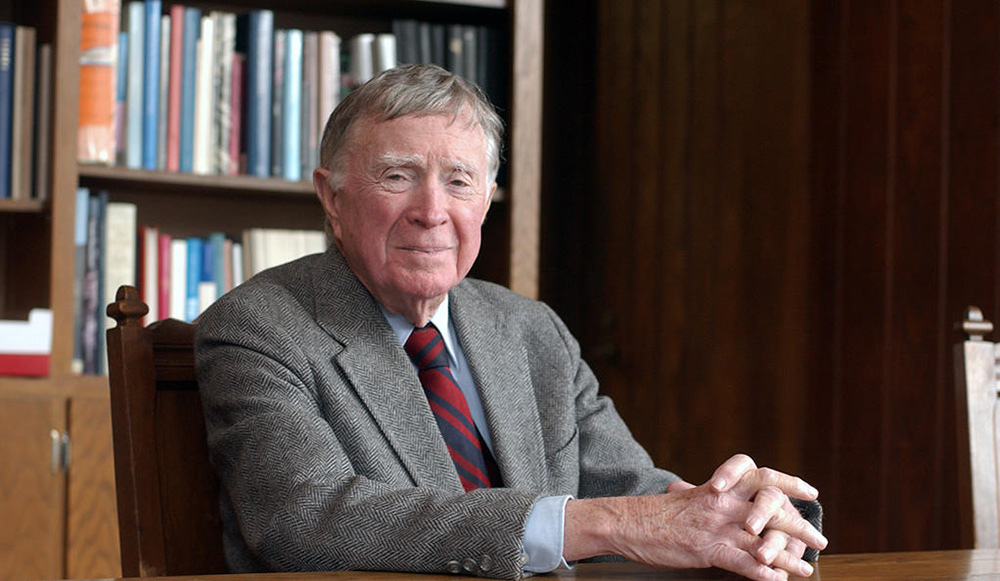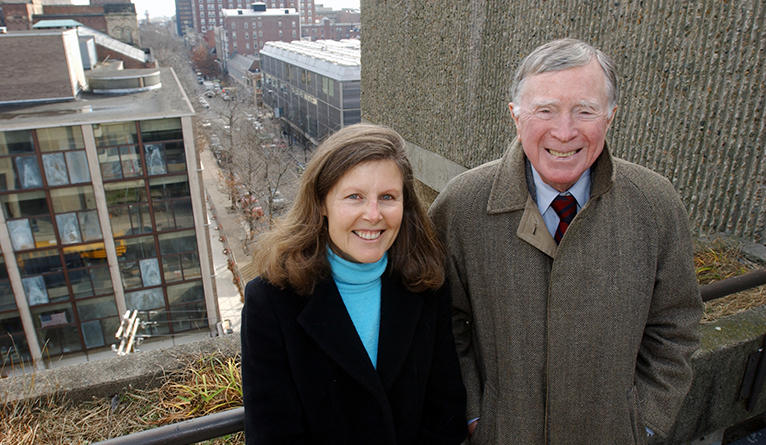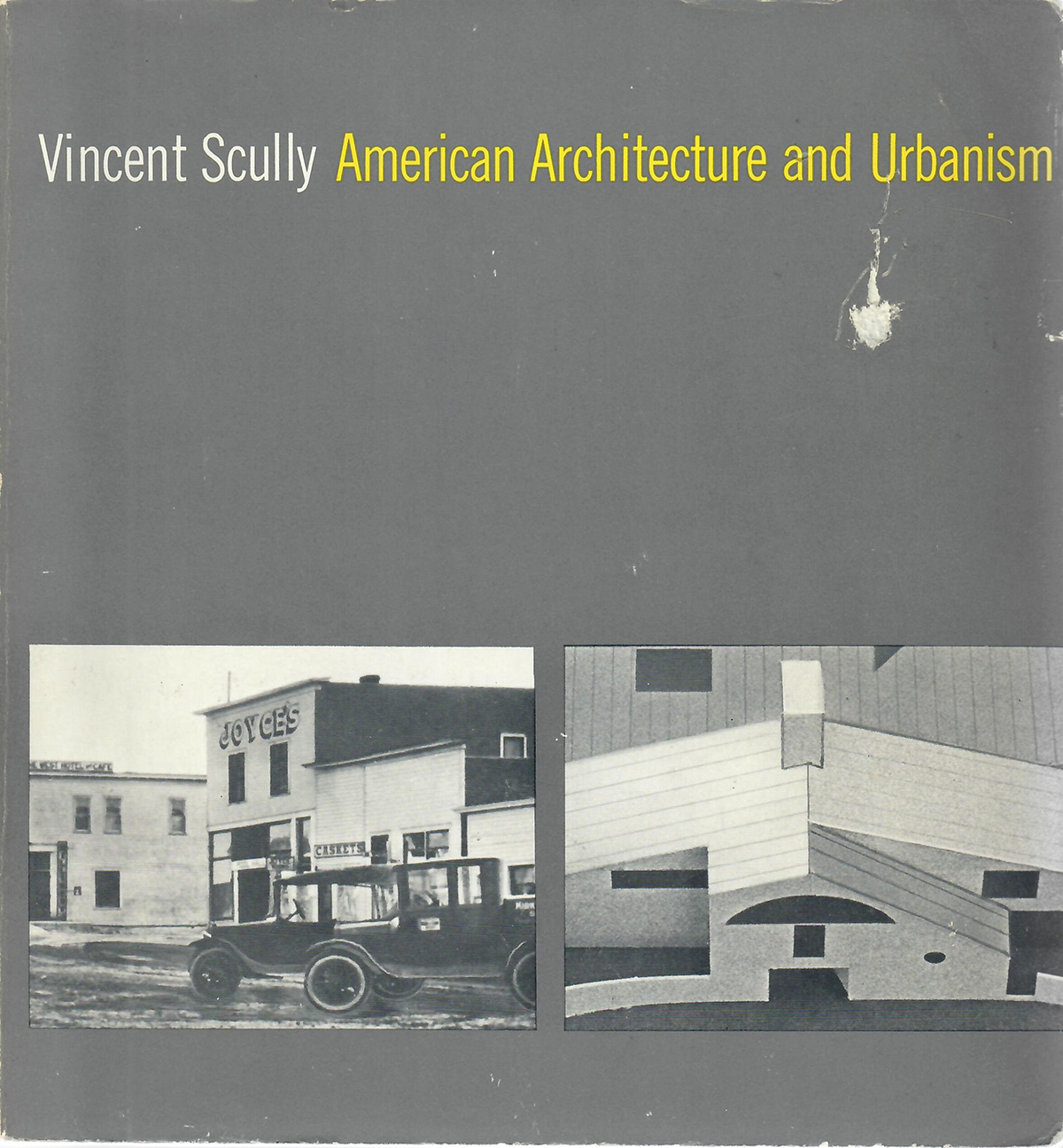Submitted by WA Contents
Eminent Yale Architectural Historian Vincent Scully dies aged 97
United States Architecture News - Dec 04, 2017 - 13:30 20159 views

Eminent American art historian and Yale University Sterling Professor Emeritus of History of Art and Architecture Vincent Scully has died following complications of Parkinson’s disease on November 30 at his home in Lynchburg, Virginia, where he had lived for the last six years. He was 97.
Vincent Scully was always considered as the most famous and influential architectural historian of the last half of the 20th century - through all his life, Scully inspired generations of students—including Maya Lin, Robert Stern and New Yorker architecture critic Paul Goldberger.
Philip Johnson once described Scully as "the most influential architectural teacher ever", and architect and former student of Scully, Alexander Gorlin described his lectures as "astounding" and he added that "he commanded the audience, mesmerizing everyone with his language and intonation. He was preacher, magician, and conjurer."
Scully was born New Haven, Connecticut, in 1920, Scully enrolled at Yale University at 16 years old and after earning his Bachelor’s, Master’s, and Doctorate degrees from Yale, Scully began teaching at the Yale faculty in 1947 and taught for more than 60 years.

Vincent Scully and wife Catherine Lynn posing in New Haven. Image courtesy of Yale University
After his retirement from Yale in 1991 he joined the faculty of the University of Miami as Distinguished Visiting Professor. However, he continued to teach at Yale during the fall semester until 2009, alternating each year between introductory courses in the history of art and the history of architecture.
Today Yalies everywhere unite in mourning the loss of the legendary Vincent Scully and in celebrating his remarkable legacy to Yale and to the built environment of the nation," said President Peter Salovey, stated in a press release of Yale.
"No faculty member in Yale’s long history has had greater influence or been more loved. Because of Vince, generations of Yale graduates have learned not just to look, but to see. Because of Vince, architects, urban planners, historic preservationists, and landscape architects have gone about their work with sharper eye and keener understanding."
"Vince loved the cityscapes of his hometown New Haven as much as he loved the buildings and courtyards of his alma mater Yale, and throughout his career used these as exemplars of what he cherished. What he believed and what he taught will not be lost because he helped ensure that it is all around us," added Peter Salovey.

1996 cover of TIME Magazine. Image courtesy of TIME
In addition to his teaching activities, Scully published more than 20 books, spanning a range of topics and some of them are: Architecture: The Natural and the Manmade (St Martins Pr., 1993), American Architecture and Urbanism (Henry Holt & Co., 1988), and The Shingle Style and the Stick Style: Architectural Theory and Design from Downing to the Origins of Wright (Yale University Press, 1971), and numerous articles.
In 1996, TIME Magazine featured Vincent Scully on its cover under the subtitle of "Great Teachers" and he was later profiled in the New Yorker.

The professor urged students to sit and absorb the images he used, not just to write down every word of his lecture. Image © Michael Marsland
Scully's spellbinding classes were so popular that they had to be held in the Yale Art Gallery lecture hall and the Law School auditorium - which seated 400 and 500 people, respectively - and were often standing room only and ended with ovations.
He wasn't using any notes and was known for the theatricality of his lectures and for urging his students to sit in the darkened auditorium absorbing the slides he used, not just to write down every word of his lecture.
"Often his emotions overtook him and he growled at the slide technicians to adjust slides, paced up and down pushing his pointer into the screen, gesturing as if to bring his audience right up to or into the slide, and once fell off the stage in his overenthusiasm (he insisted he had jumped, not fallen)," detailed the university.
"But whether speaking about Greek temples or New Haven landscapes, he carried his audience along with him, and by accounts of alumni who revered and remembered him for generations, he taught them to really see the world around them in a way that influenced them forever."

Fourth year School of Architecture jury in 1960. Front row: Philip Johnson, Paul Rudolph, and Vincent Scully. Image © Stanely Tigerman
In 1999, the National Building Museum launched the Vincent Scully Prize, honouring individuals who have exhibited exemplary practice, scholarship, or criticism in architecture, historic preservation, and urban design. In 2004, President George W. Bush was awarded with Scully the National Medal of Arts—the highest national honor for artists and art patrons.
Scully was an advocator of modernist architecture, but Scully later rejected that school of thought. In a 2004 interview with the Yale Bulletin & Calendar, he said: "What I learned as time went on was that Modernism was very faulty, in view of what architecture was. That it was a simplistic view of architecture. It was predicated on an arbitrary aesthetic. It was totalitarian in its mode of thinking. Everybody had to do things one way."
He recalled that while taking pictures of buildings during a trip to Italy as a Fulbright Scholar, "I began to realize as I was taking pictures of buildings that I had to use more than one camera frame, because the buildings had to be viewed in relation to one another. I began to learn that everything is in relation to everything else."
"Then I worked on Greek temples and realized that they had to be seen in the landscape in which they were set, and that landscape is sacred as well. God is in the landscape, and God is in the building. And in that relationship is the typical Greek balance between what nature wills and what man wants. So I began to see everything in that relationship, and I began to realize that the Modernists were not doing so," explained in detail the Yale University.

"American Architecture and Urbanism" published in 1988. The book illustrates the history of American architectural styles and city planning that has special emphasis on today's redevelopment and urban sprawl problems.
Scully is also known with his "urban renewal" efforts of the 1960s and 1970s were destroying much of the architectural heritage of America’s cities, and he became a leader in the preservationist movement and a champion of its cause.
In that same interview in the Yale Bulletin & Calendar, Scully said: "We expect our buildings to outlive us. It's very important. The continuity of what we build in cities goes back to the very first cities of mankind. The idea fundamentally is that architecture should be permanent."
Scully was married since 1980 to Catherine Lynn (known as “Tappy”). He is survived by his three sons with his first wife, Susannah (known as Nancy), now deceased — Daniel, Stephen, and John; by a daughter, Katie with his second wife, Marian La Follette, now of Branford, CT; and by five grandchildren.
Yale University opened a website - titled "Remembrances of Vincent Scully" - features tributes to the renowned scholar and professor by members of the Yale community and beyond. Send your remembrances via this email [email protected].
Top image courtesy of Yale University
> via Yale University
